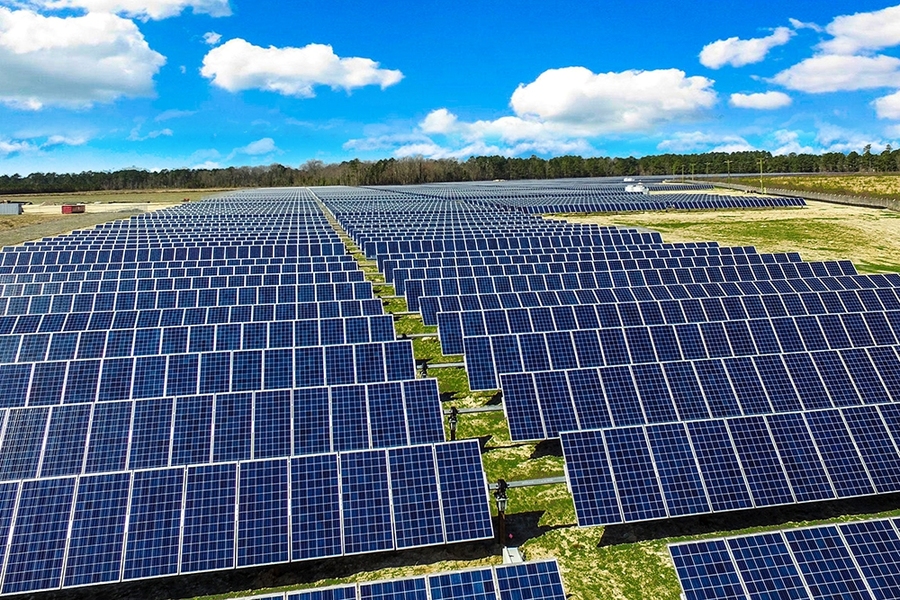Browse the full report at https://www.credenceresearch.com/report/digital-substations-market
Wind turbines consist of several key components that work together to generate electricity:
1. Blades: The turbine’s blades are designed to capture wind energy. When wind flows over the blades, it creates lift, causing the blades to rotate. Modern turbines typically have three blades.
2. Rotor: The blades are attached to a hub, forming the rotor. The rotor’s rotation is the primary movement that generates energy.
3. Nacelle: This is the housing atop the tower that contains essential components such as the gearbox, generator, and braking system. The nacelle can pivot to align with the wind direction, a process known as yawing.
4. Gearbox: The gearbox connects the low-speed shaft from the rotor to the high-speed shaft, increasing the rotational speed to match the generator’s requirements.
5. Generator: The generator converts mechanical energy from the rotor into electrical energy. Most generators in wind turbines are based on electromagnetic induction principles.
6. Tower: The tower supports the nacelle and rotor, elevating them to a height where wind speeds are higher and more consistent.
7. Control System: This system monitors wind conditions and turbine performance, adjusting blade pitch and yaw to optimize efficiency and protect the turbine from damage.
How Wind Turbines Work
The operation of a wind turbine can be divided into several stages:
1. Wind Capture: Wind flows over the blades, creating aerodynamic lift. This lift is what causes the blades to rotate. The amount of power generated is proportional to the cube of the wind speed, meaning that small increases in wind speed result in significant increases in power output.
2. Energy Conversion: As the rotor turns, the gearbox increases the rotation speed from the rotor to the generator’s required speed. This high-speed rotation allows the generator to produce electricity.
3. Electricity Generation: The generator converts the mechanical energy from the rotor into electrical energy. Most wind turbines use a doubly-fed induction generator (DFIG), which is efficient and can operate over a wide range of wind speeds.
4. Electricity Transmission: The generated electricity is transmitted from the generator to the power grid. Transformers at the base of the turbine increase the voltage for efficient long-distance transmission.
5. Monitoring and Control: The control system continuously monitors wind conditions and turbine performance. Sensors detect wind speed and direction, blade pitch, rotor speed, and other parameters. The system adjusts the blade pitch and yaw angle to ensure the rotor faces the wind at an optimal angle and to control the rotational speed.
Maintenance and Efficiency
Regular maintenance is crucial for the efficient operation of wind turbines. Maintenance activities include inspecting and servicing the gearbox, generator, blades, and control systems. Predictive maintenance, which uses data from sensors to predict and prevent failures, is becoming increasingly common.
Challenges and Innovations
Despite their benefits, wind turbines face several challenges. These include variable wind speeds, which affect energy output, and mechanical stresses, which can lead to wear and tear. Innovations in materials, design, and control systems are continually improving turbine efficiency and durability. For example, advanced blade designs and materials can capture more energy and withstand harsher conditions. Additionally, smart grid technologies and energy storage systems help mitigate the intermittency of wind power, ensuring a more stable electricity supply.
Key Players
- Eaton
- Siemens
- GE
- ABB
- DNV GL
- Locamation
- Toshiba America Electronic Components, Inc.
- Hitachi
- Mitsubishi Electric Display Solutions
- Schneider Electric
- Kalkitech
- Helinks LLC
Segmentation
- By Module
- Hardware
- Fiber-optic Communication Networks
- SCADA Systems
- By Type
- Transmission Substation
- Distribution Substation
- By Installation Type
- New Installation
- Retrofit Installation
- By Voltage
- Up to 220kV
- 220-250kV
- Above 500kV
- By Industry:
- Utility
- Heavy Industries
- Transportation
- Others
- By Region
- North America
- US
- Canada
- Mexico
- Europe
- Germany
- France
- UK.
- Italy
- Spain
- Rest of Europe
- Asia Pacific
- China
- Japan
- India
- South Korea
- South-east Asia
- Rest of Asia Pacific
- Latin America
- Brazil
- Argentina
- Rest of Latin America
- Middle East & Africa
- GCC Countries
- South Africa
- Rest of Middle East and Africa
About Us:
Credence Research is committed to employee well-being and productivity. Following the COVID-19 pandemic, we have implemented a permanent work-from-home policy for all employees.
Contact:
Credence Research
Please contact us at +91 6232 49 3207
Email: sales@credenceresearch.com








